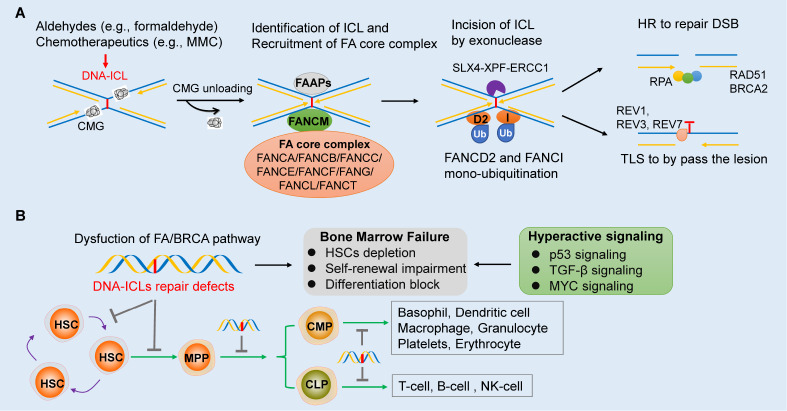Figure 1 .
The FA/BRCA pathway and HSC development
(A) Brief description of the DNA inter-strand crosslink (ICL) repair mechanism by the FA/BRCA pathway. DNA-ICLs induced by various exogenouschemotherapeutics ( e. g., MMC) or endogenous aldehydes ( e. g., formaldehyde) are first recognized by FANCM after the CMG (CDC45/MCM2-7/GINS) complex dissociation from the replication fork. FANCM then acts as a bridge to recruit other core complex members to ICLs to catalyze the mono-ubiquitination of FANCD2 and FANCI. Ubiquitinated FANCD2/FANCI can recruit the SLX4-XPF-ERCC1 exonuclease complex to unhook DNA-ICLs with the generation of DSBs. Lastly, DSBs are further repaired by HR, and the crosslink remnants are bypassed by TLS. (B) In the hematopoietic process, the HSCs must maintain self-renewal to prevent depletion of the stem cell pool in the BM. In addition, the HSCs have the pluripotency to differentiate into MPPs that can further differentiate into CMPs and CLPs and the downstream mature blood cells when needed. Defects in the FA/BRCA pathway will result in DNA-ICLs repair defects and genomic instability of HSCs, leading to bone marrow failure with HSCs depletion, self-renewal impairment, and differentiation block. FA, Fanconi anemia; FAAPs, FA-associated proteins; MMC, mitomycin C.

